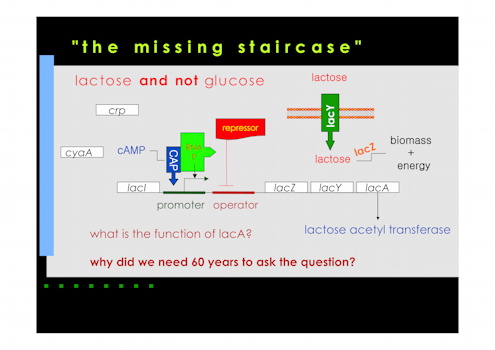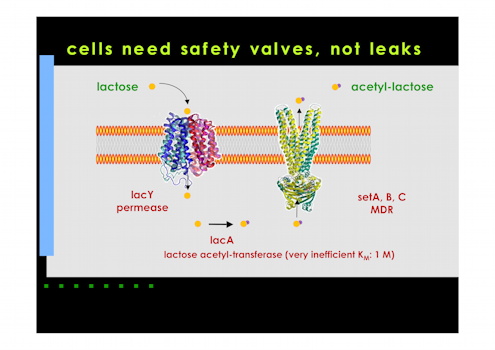
|
| home |
| media |
| research |
| lectures |
| bioremediation and symplectic biology |
| media |
| publications |
WHY "SYMPLECTIC" BIOLOGY? |
|
Thinking as an engineer: a nouvel approach to metabolic bioremediation Sequencing DNA, carrying the text of the genome programs (the instructions that allow the construction of all living organisms as well as their daily life), allows investigators to understand biology globally, in an integrated way. However this supposes that one is able to reconstruct life, using the knowledge accumulated over the years, in particular in the past decades. Nothing is better than trying to reconstruct something in order to see that one has not forgotten anything essential. In the case of living organisms this view has produced two complementary disciplines, systems biology and synthetic biology. We have chosen to name the association of these two approaches "symplectic biology" to emphasize that this is a novel and revolutionary entreprise. The word "symplectic" in fact is the same as "complex" in latin, but in greek, and it does not carry the fuzzy connotations of the latter, that are usually the cause of much confusion. AMAbiotics uses this engineering way to explore the complementarity between the metabolism of the host (human beings in our first studies) and the metabolism of its associated flora (made of ten times more individual cells that the total of the cells of the human body). Briefly, we identify essential processes (such as biosynthesis of macromolecules, nucleic acids and proteins in particular) where deep engineering questions must be asked.
We have thus discovered that the systems that import/export metabolites in the cell often created situations that would be literally explosive. Transporters are so efficient that the cell may be led to accumulate such high levels of a metabolite that it would explose under the building up of an unbearable osmotic pressure. This reasoning allowed us to uncover the reason why particular enzymes were tagging metabolites that become accumulated in the cell, and the export of these modified metabolites by specific membrane transporters that play the role of safety valves.
We are confirmed in this (still quite novel) way of considering biology by the fact that, if this engineering approach had been used earlier, much failures in the fight against pathogenic microbes (which carry processes allowing them to resist antibiotics), and most of all against cancer (resistance to anticancer drugs), would have been prevented. This would have focused tens of thousands of scientists and doctors on other investigations, infinitely more rewarding than the goals they tried to reach while they were doomed to fail. Our exploration of aging, either naturally or as the result of chronic treatments that alter metabolism, uses this original approach. This is how we could identify a series of functions that are involved in the process of aging, and to link them to the general metabolism of the host, his/her microbial flora, and his/her diet. Furthermore this approach allows us to build up original collaborations with many laboratories in Europe and world-wide, in a cutting-edge area that is the hallmark of the XXIth century. |
|
conjectures
and refutations: the way of science science and
society public debates |

